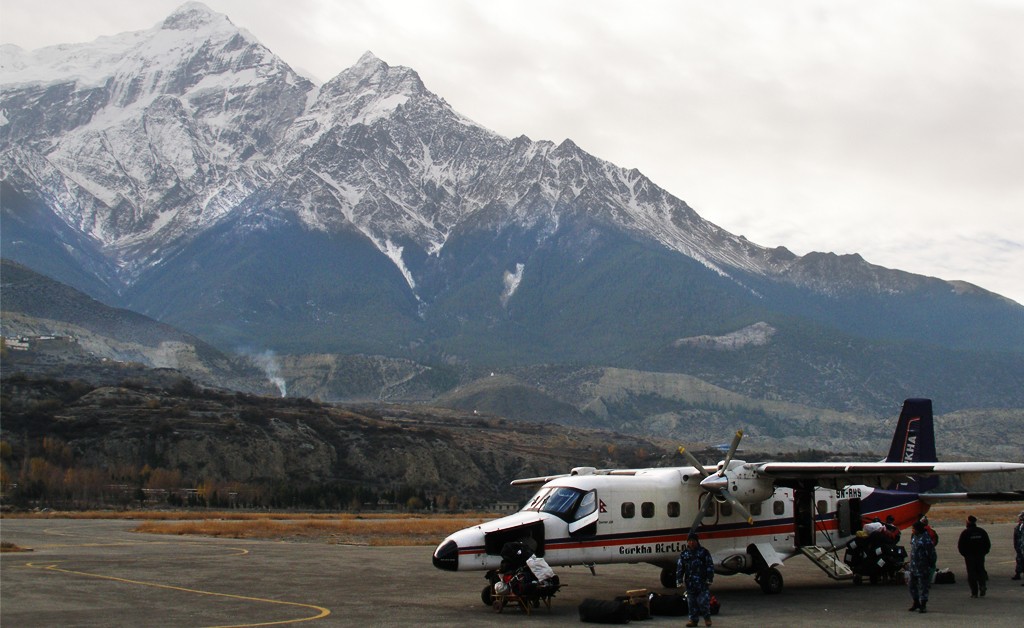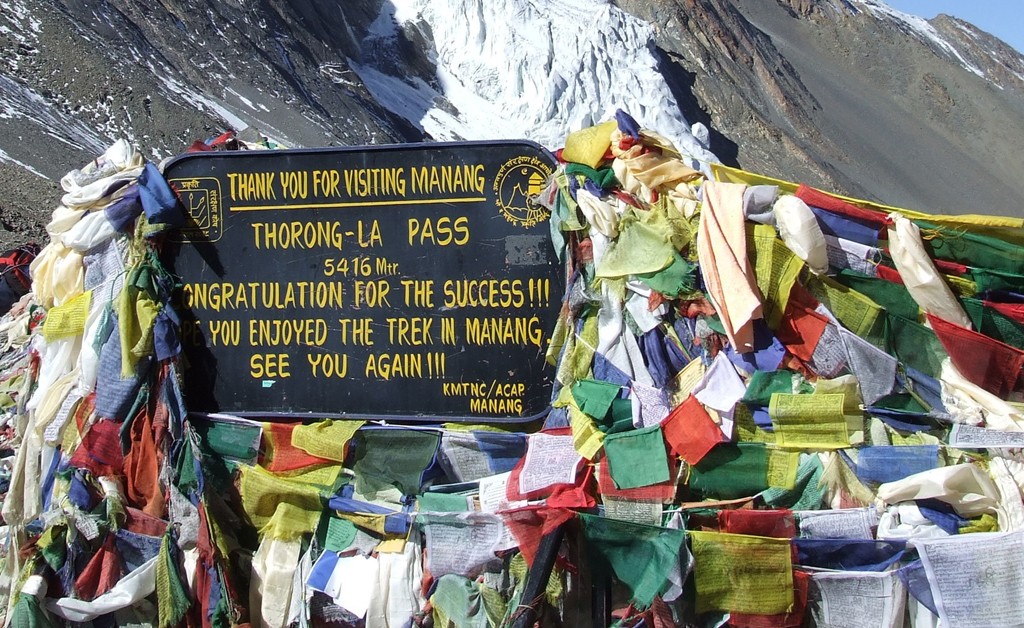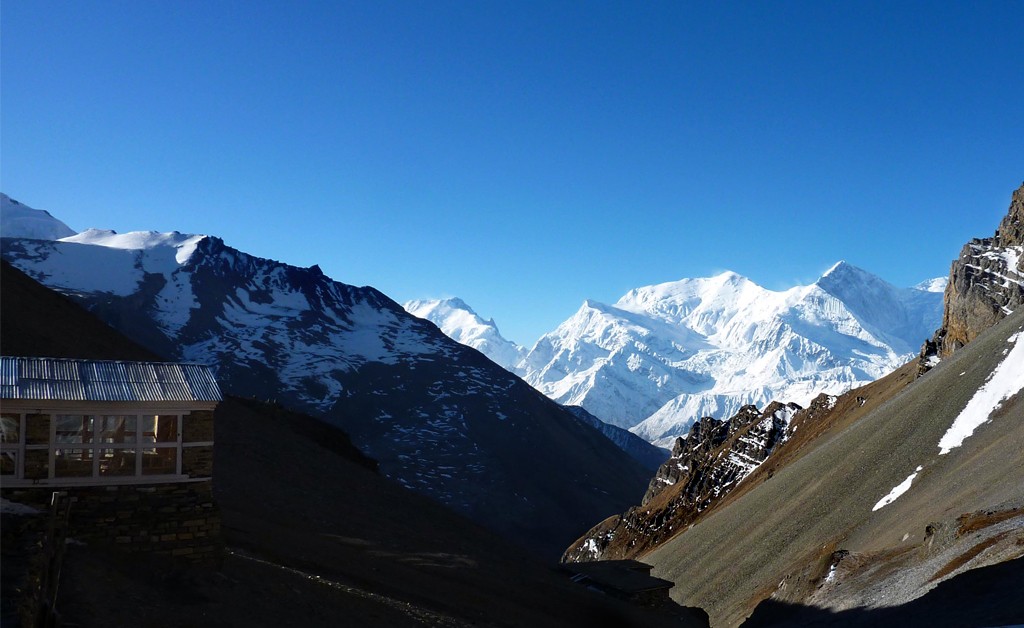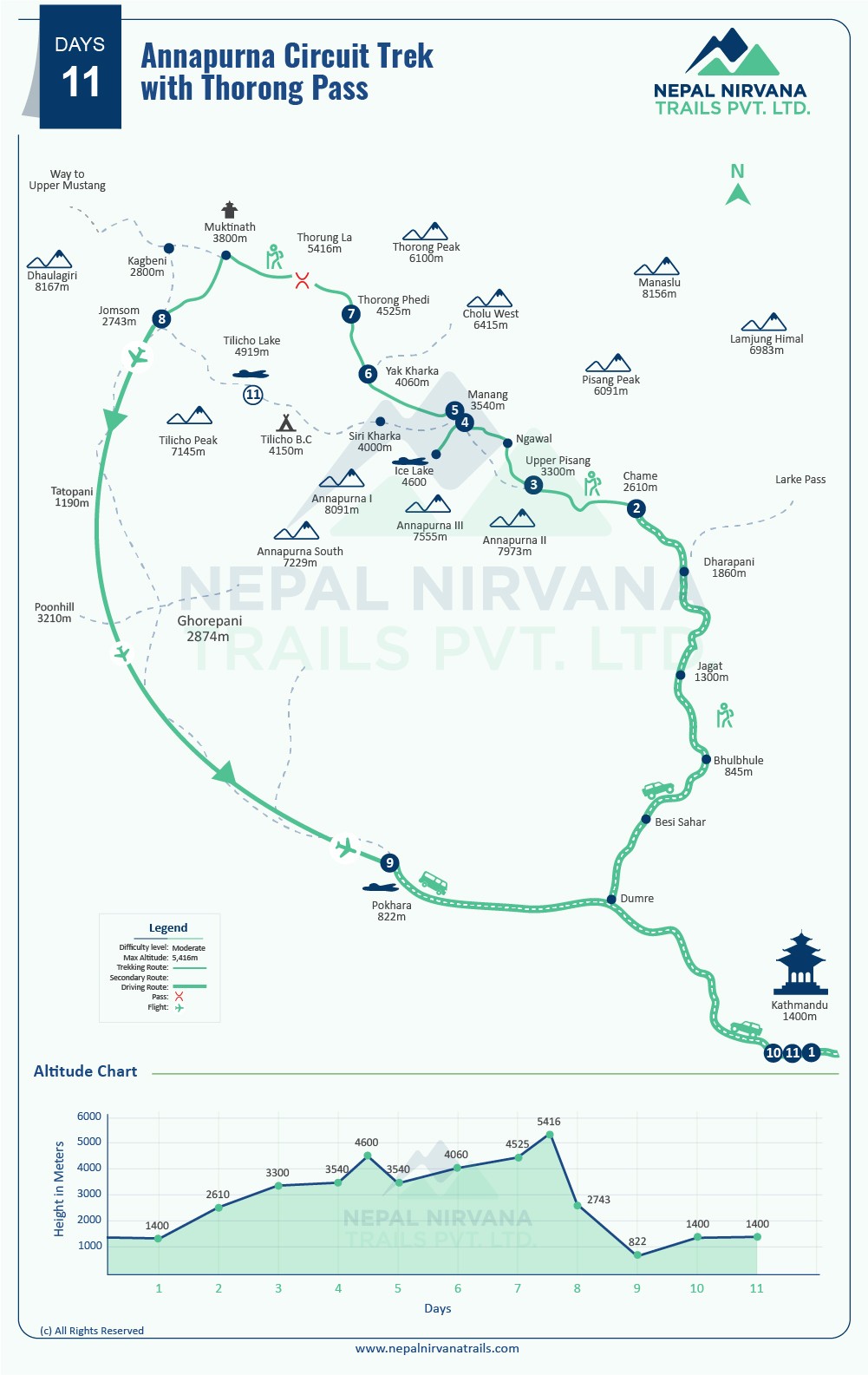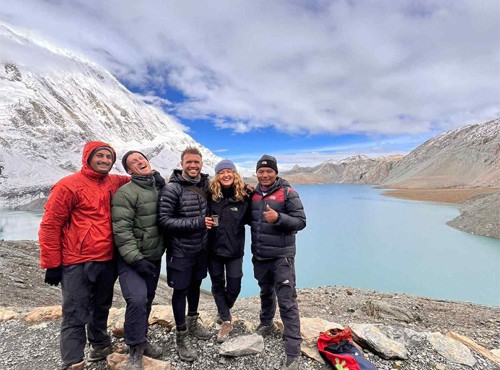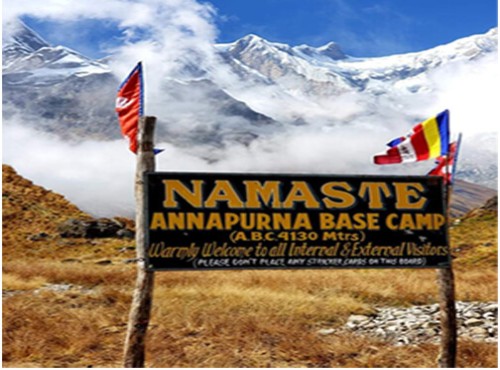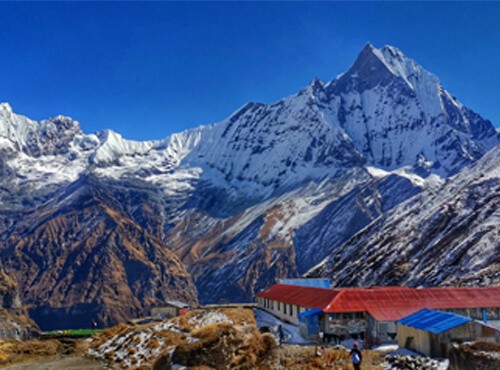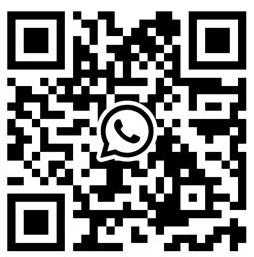Short Annapurna Circuit Trek difficulty
Just because we have made the trek short doesn't mean the journey will get any easier. Yes, you'll be spending less time walking, but the terrain and the difficulty are the same. You'll be walking 6 to 7 hours a day in a remote area. The trail is rugged and steep. You get limited modern facilities while trekking. Everything is basic and simple.
Similarly, the Short Annapurna Circuit Trekking crosses the Thorong La pass. It is one of the most challenging passes in the Himalayas. The route follows the steep, rocky track.
You may also have to walk on snow depending upon the season. This trek is for experienced trekkers who are aware of the hurdles the Himalayas possess and can endure.
Altitude Sickness
During the Annapurna circuit short trek, the risk of altitude sickness is quite low. On the eighth day of your arrival in Kathmandu, you'll be at the top of Thorong La pass, which stands at 5,416 meters.
Even though you'll be gaining a constant elevation every day before touching the trek's highest point, the change is still huge. Therefore, you have to look out for altitude sickness and make sure you do not see any symptoms.
Some of the symptoms are bad headache, difficulty in breathing, loss of appetite, nausea, and insomnia. Take rest days and drink a lot of water to avoid altitude sickness while trekking.
Training for the Annapurna Circuit
To train yourself for the Annapurna circuit trek, we advise you to work on your stamina and walking. The trek demands long walks, so build up long walking hours. Go on a few hikes to do so. Likewise, you can do activities like swimming, cycling, and running to increase your stamina.
No advance training is needed for this trek. Only make sure your body, and especially your legs are fit & ready for the trail. If you go to the gym, add cardio to your routine.
Annapurna Circuit Trek Permit
You have to obtain the Annapurna Conservation Area Project (ACAP) permit and TIMS card for the Annapurna circuit short trek. Our Short Annapurna Circuit Trek cost covers the cost of these permits. We also get the permits on behalf of you to make your time hassle-free in Kathmandu.
Annapurna Conservation Area Project (ACAP) permit cost:
NPR 200 per person for SAARC nationals
NPR 3,000 per person for other nationals
Kids below 10 years old do not need an ACAP permit
TIMS Card permit cost:
NPR 2,000 per person
Short Annapurna Circuit Trek best time
Spring (March to April) and Autumn (October to November) is the best time to go on Annapurna Circuit Trek 11 Days. The weather is mostly stable and pleasant during these seasons, which is very important for a successful & safe venture. Likewise, the trail also gets extremely beautiful with a range of flora and vegetation.
Low chances of precipitation. The views are clear and stunning. Likewise, the chill breeze and fresh air make the walk fantastic. The temperature fluctuates between 18 to 5 degrees Celsius.
Accommodation & Meals
In Kathmandu and Pokhara, you stay overnight in a tourist standard hotel. The hotels are equipped with all modern amenities and services. While on the trail, the teahouse will be the accommodation for your night's stay. The teahouse in this part of Nepal is pretty basic and offers minimal services due to the isolation of the region. The rooms are generally small with a shared or attached washroom.
In cities, you will be served breakfast only and a complimentary farewell & welcome dinner. During the trek, three meals a day are given. The meals are served as per the menu of the teahouse. You will get a wide range of dishes to have. However, the taste might be a little different from usual due to species. You are advised to carry snacks and bars with you.
Travel Insurance
Travel insurance is needed to join Annapurna Short Trek. This is for your safety. Even with all of our efforts, we can not predict the unseen situation in the remote Himalayas. Therefore having well-covered travel insurance will let you explore freely. Your travel insurance must include medical bills, air evacuation, flight cancellation, and loss or theft of personal property.
Travel Tips (electricity, internet, ATM, luggage, tipping, personal expenses)
- Annapurna Circuit has no ATM to withdraw money while trekking. Your last chance to withdraw money is in Kathmandu.
- Electricity is available in the teahouses. You can use the charging stations to charge your devices, paying a few extra bucks. Carrying extra batteries is recommended.
- Most of the trekking route receives a cellular network. So, you can use the internet. You may get wifi service in some villages at lower elevations.
- The main luggage during the trek is duffle bags. You have to carry a light day pack that might include your essentials, water bottle, etc. Also, have a lockable suitcase with you so that you can leave extra clothing in the hotel's locker room free of charge.
- Personal expenses like drinks, snacks, souvenirs, etc, are not added to the package cost. If you do not drink alcohol, then USD 12 to USD 15 per day per person is enough on the trail for a hot shower, drinks, snacks, etc.
- You are always recommended to give tips to tour guides, drivers, trekking guides, and porters. Again it is a matter of your choice. If you like the service, then tipping will be appreciated. The tip is not included in the package cost.
